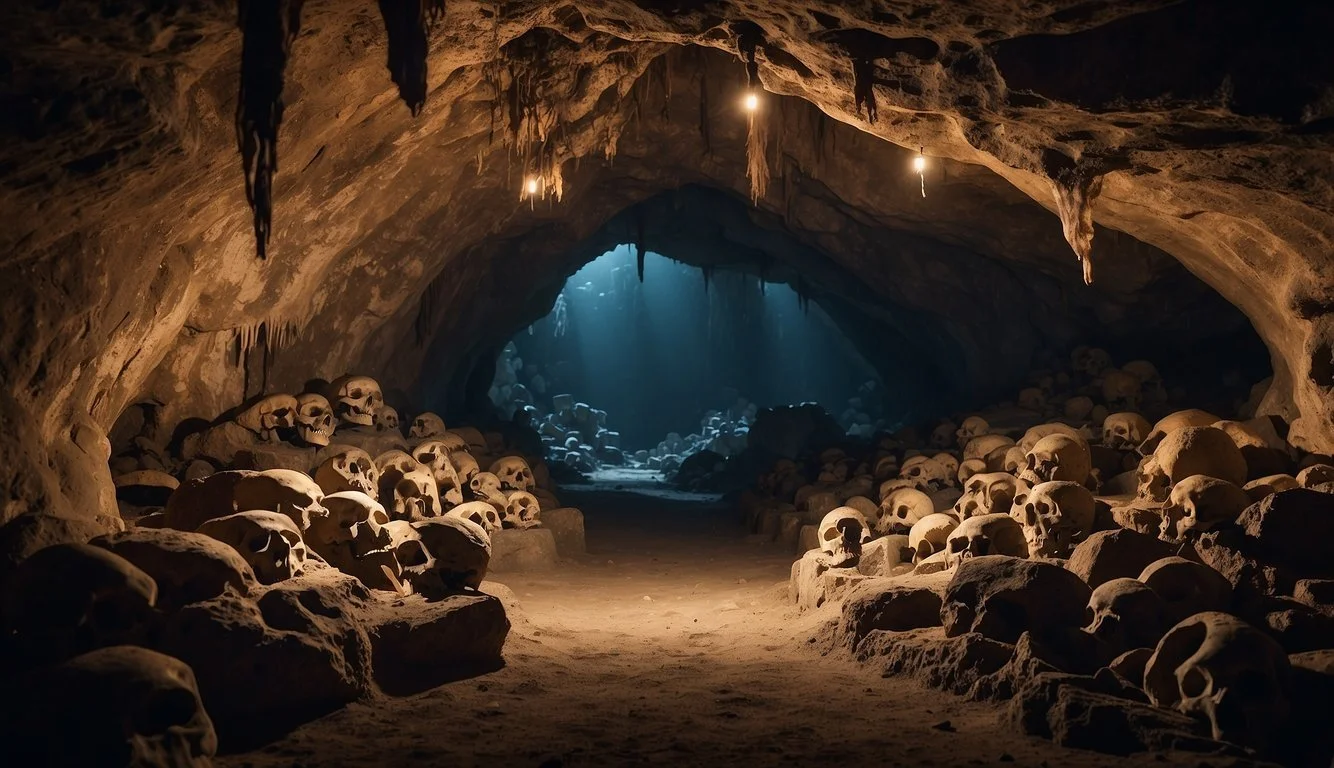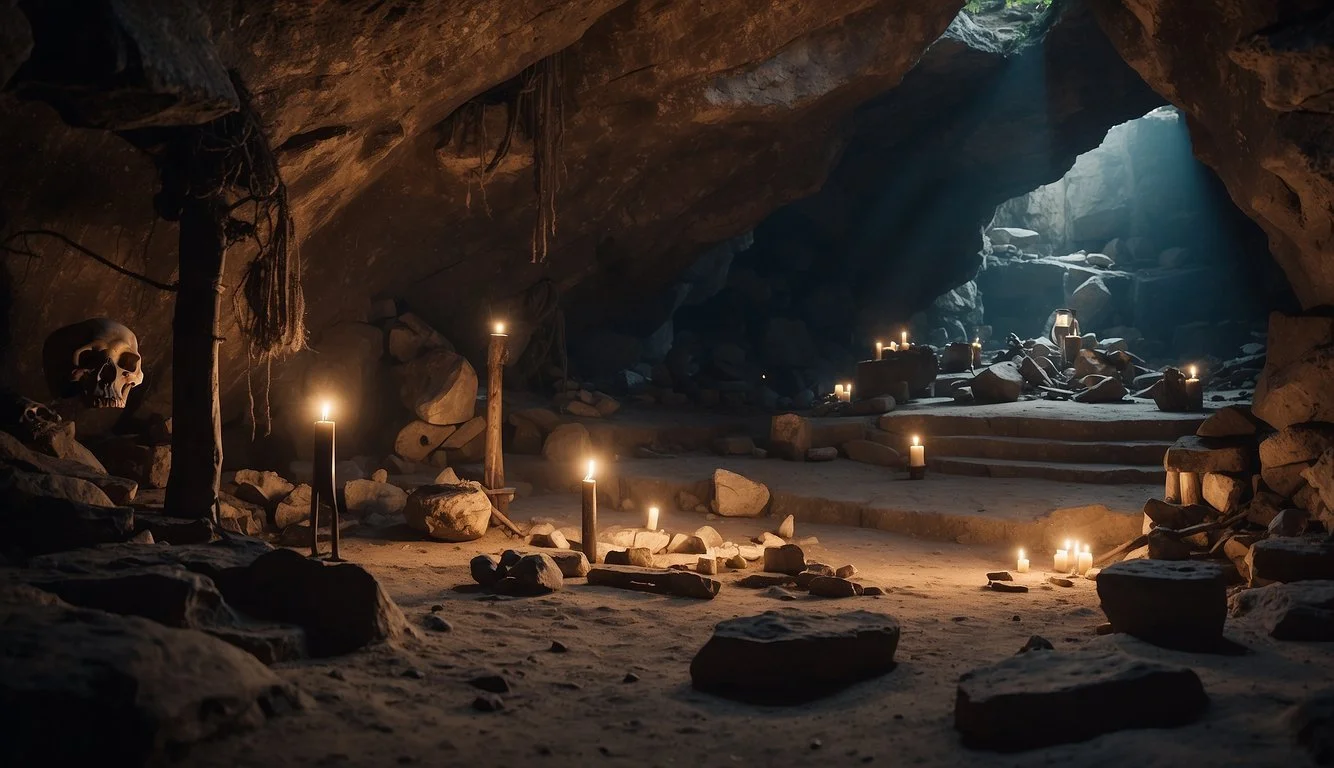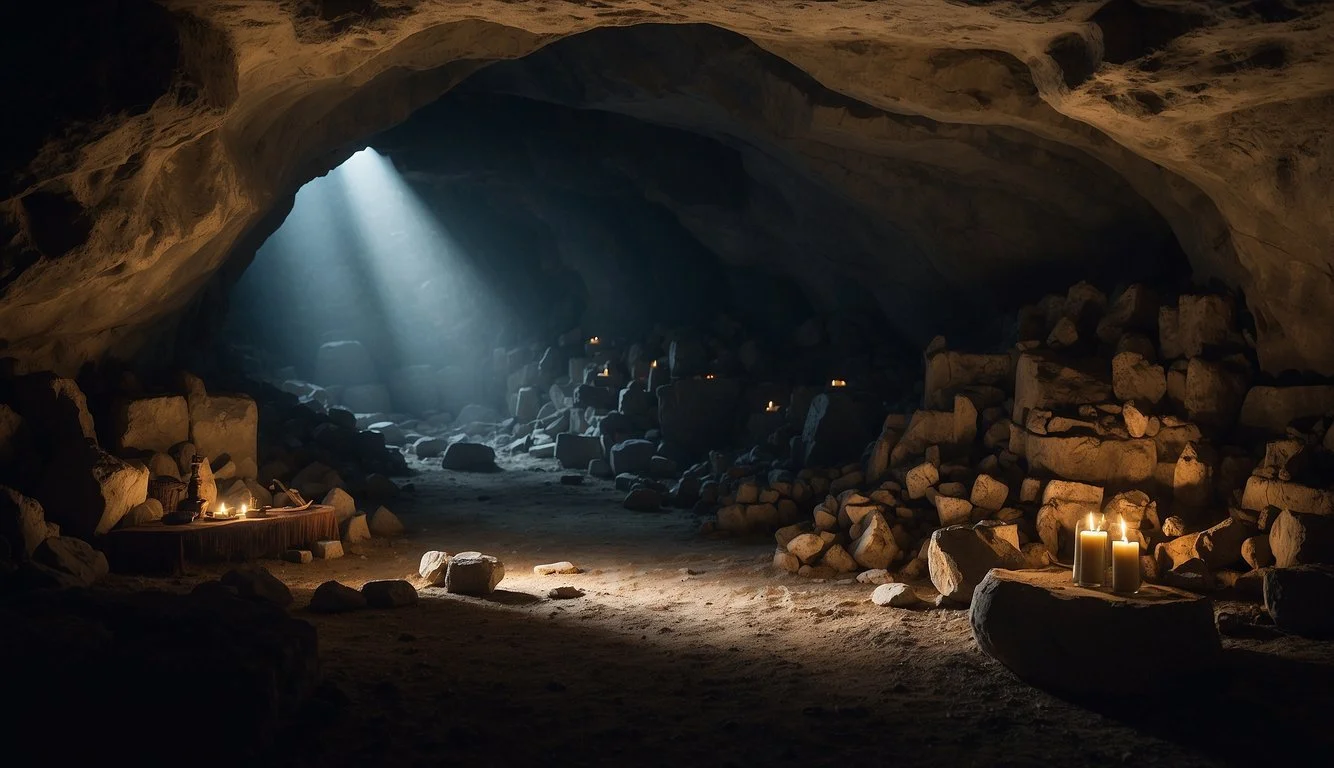Documentary Review: Unknown: Cave of Bones (2023)
A Deep Dive into Prehistoric Mysteries
The 2023 documentary "Unknown: Cave of Bones" invites viewers to explore one of the most significant archaeological discoveries of our time. Directed by Mark Mannucci, this documentary delves into the South African cave that houses the skeletal remains of Homo naledi, an ancient human relative. Through detailed footage and insightful commentary, the film sheds light on what these findings reveal about human evolution.
The documentary captures the imagination by presenting enthralling science and new insights into our ancestors. John Serba of Decider notes that the film aims to broaden our notions of what it means to be human. Despite its potentially tedious moments, the documentary features standout segments that provoke thought and curiosity.
For those fascinated by history and anthropology, "Unknown: Cave of Bones" is a compelling watch. While it has its flaws, including a less-than-perfect structure, the revelations about Homo naledi offer a fascinating glimpse into the past and deepen our understanding of human development. The documentary's ability to present these ancient stories in a modern context makes it a significant and intriguing addition to the genre.
Overview of 'Unknown: Cave of Bones'
"Unknown: Cave of Bones" explores the discovery and significance of ancient human relative Homo naledi within a South African cave. The film highlights the journey of the excavation team and the implications of their findings.
Synopsis
"Unknown: Cave of Bones" is a Netflix documentary released in 2023. It centers on the discovery of Homo naledi fossils in the Rising Star Cave system in South Africa. Led by paleoanthropologist Lee Berger, this expedition unearthed skeletal remains that offer insights into burial practices and social behavior 100,000 years before the emergence of modern humans. The film combines scientific investigation with a narrative that brings these ancient beings to life, making it both informative and engaging.
Director's Profile
Mark Mannucci directed "Unknown: Cave of Bones." He is known for creating science documentaries that uncover historical mysteries and human evolution. Mannucci’s skill lies in balancing factual accuracy with compelling storytelling, which is evident in this documentary. His previous works in the "Unknown" series have tackled subjects like Egypt's Lost Pyramid and global military secrets, establishing him as a reputable figure in this genre.
Critical Reception
Reviews for "Unknown: Cave of Bones" acknowledge its meticulous attention to detail and engaging content. Some critics found the documentary's pacing slow and repetitive, while others praised its intimate look at the excavation process. Despite mixed opinions on execution, the film is lauded for its groundbreaking depiction of Homo naledi, offering a rare glimpse into a relatively unknown chapter of human ancestry.
Content Analysis
"Unknown: Cave of Bones" delves into the themes of human origins and scientific discovery. It combines compelling visuals with detailed narration to provide an insightful look into a recent archaeological expedition.
Thematic Exploration
The documentary "Unknown: Cave of Bones" explores the deep roots of human evolution through the discovery of homo naledi remains. It examines what these findings reveal about human ancestry and how they challenge existing theories.
The film interleaves scientific inquiry with philosophical reflections on what it means to be human. It amplifies the narrative of shared humanity across millennia, making these ancient bones resonate with contemporary viewers.
Cinematography and Visuals
The documentary excels in its use of visuals to convey the gravity of its subject matter. The cinematography focuses on the South African cave system where the skeletal remains were found. The dimly lit shots capture the mystery and challenge of the excavation process.
Macro shots of the bones and detailed reconstructions bring the ancient past to life. These visual elements are supported by aerial shots and graphics that provide context to the archaeological site and its surroundings.
Effectiveness of Narration
The narration in "Unknown: Cave of Bones" serves as a critical tool for guiding viewers through complex scientific concepts. It strikes a balance between educational content and engaging storytelling.
Performed with a measured tone, the narration breaks down intricate details about the discovery and analysis of homo naledi remains. This approach ensures that the documentary remains accessible to a broad audience without sacrificing depth.
Additionally, interviews with experts add credibility and diverse perspectives, enriching the overall narrative.
Cultural and Historical Context
"Unknown: Cave of Bones" focuses on both the discovery and implications of the Homo naledi skeletal remains found in a South African cave. The documentary explores the significance of these findings, both in terms of historical accuracy and cultural impact.
Historical Accuracy
The documentary delves into the archaeological excavation led by paleoanthropologist Lee Berger. It showcases the rigorous methods employed to uncover the Homo naledi bones, which date back thousands of years.
Experts provide detailed explanations about the tools, dating techniques, and processes used in this fieldwork. The fossils are depicted as crucial pieces of evidence, contributing to the scientific understanding of human evolution.
While some academic opinions differ, the documentary maintains a balanced approach, addressing various hypotheses and interpretations. This comprehensive portrayal helps viewers appreciate the meticulous nature of such archaeological engagements.
Cultural Impact
"Unknown: Cave of Bones" also examines the broader cultural ramifications of the Homo naledi discovery. The film suggests that these findings challenge conventional views on human origins and behaviors.
By humanizing the ancient species through artistic recreations and narrative storytelling, it bridges the gap between past and present. This approach allows the audience to connect with distant ancestors, fostering a deeper sense of shared heritage.
Furthermore, the documentary ignites discussions about identity, origins, and what it means to be human. These themes resonate not only within scientific communities but also with the general public, stimulating interest in paleoanthropology and ancient history.
Production Details
Directed by: Mark Mannucci
Featured Expert: Lee Berger, Paleoanthropologist
Key Collaborators:
Keneiloe Molopyane
Agustin Fuentes
John Hawks
Release Date: July 17, 2023
Platform: Netflix
The film documents a recent expedition into a South African cave, part of the Cradle of Humankind World Heritage Site.
The focus is on skeletal remains of Homo naledi, an ancient human relative.
Key Filming Locations:
South Africa, especially the Cradle of Humankind
The documentary blends immersive cinematography with expert interviews, creating a visually engaging and informative portrayal of the archaeological site.
Cameras employed night vision and 3D mapping technology to capture footage in tight, dark cave environments.
Cast and Characters
Unknown: Cave of Bones brings a team of dedicated researchers and experts to the forefront. Leading the expedition, they delve into the significance of their findings, while the supporting cast ensures a comprehensive exploration of this fascinating project.
Lead Profiles
Lee Berger shines as the leading paleoanthropologist. His dedication and expertise drive the narrative. Known for his groundbreaking work in discovering Homo naledi, Berger's credibility and determination give the documentary a solid foundation.
Keneiloe Molopyane, a rising star in archaeology, adds a fresh perspective. Her enthusiasm and rigorous methods complement Berger’s leadership, making their dynamic both engaging and educational.
Agusin Fuentes and John Hawks also play pivotal roles. Fuentes offers deep insights into human evolution, while Hawks bridges the gap between scientific discoveries and public understanding.
Supporting Cast
The supporting cast comprises a blend of skilled researchers and technical experts. Each member's contribution is crucial in piecing together the story of Homo naledi.
Cinematographers capture the intricacies of the cave and the meticulous work involved. Their efforts ensure that viewers can appreciate the complexity and significance of the site.
Technical Crew, including set designers and sound engineers, bolster the immersive experience. Their behind-the-scenes work brings the ancient cave and its secrets to life.
Additional Experts, such as field assistants and lab technicians, support the main cast. Their roles, though less highlighted, are essential in validating and analyzing findings, contributing to the documentary's overall depth and accuracy.
Technical Analysis
In "Unknown: Cave of Bones," several technical aspects shine, notably the editing techniques, sound design, and the score and music, each contributing uniquely to the documentary's overall feel and presentation.
Editing Techniques
The editing of "Unknown: Cave of Bones" aims to maintain audience engagement while presenting complex archaeological findings. Rapid cuts between excavation scenes serve to emphasize the intensity and meticulous nature of the work.
Interviews with experts like Lee Berger are strategically interwoven with footage from the cave, adding context and depth.
Flashback sequences illustrate hypothetical scenarios based on fossil evidence, blending past and present seamlessly. Some viewers might find repetition in these elements, but it effectively reinforces key findings.
Sound Design
The sound design in "Unknown: Cave of Bones" works meticulously to draw the viewer into the subterranean world. Ambient cave sounds, such as dripping water and distant echoes, create a sense of immersion.
The sound design team employs contrast effectively, using moments of silence to underscore significant discoveries. This sharpens the impact of scientific revelations.
Field recordings, expert narration, and diegetic sound create a cohesive and engaging audio environment, enhancing the storytelling by adding layers of auditory complexity.
Score and Music
The score for "Unknown: Cave of Bones" underscores the documentary's themes of discovery and human history. The music is characterized by subtle, atmospheric compositions that respond dynamically to the visuals.
String arrangements often highlight moments of tension or significant finds.
Piano and light percussion subtly drive the narrative forward, ensuring the music never overpowers the dialogue or natural sounds.
The score punctuates key moments and transitions, adding emotional weight without distracting from the scientific content. This careful balance in the musical cues helps in maintaining a tone that is both engaging and respectful of the documentary's subject matter.
Audience Response
"Unknown: Cave of Bones" has garnered mixed reactions from both critics and viewers. On Rotten Tomatoes, the documentary holds a 71% Tomatometer score based on critics' reviews, while the audience rating is relatively lower at 59%.
Some viewers have praised the film for its compelling insights into the Homo naledi and the intriguing discoveries within the South African cave.
Others have found it to be less engaging, citing a slow pace and repetitive content.
Aspect Critics' Comments Audience Comments Positive Feedback ― Compelling narrative ― Insightful discoveries ― Fascinating details about Homo naledi Negative Feedback ― Occasionally dubious as a science documentary ― Slow pace, lack of engagement
Additionally, some reviews mention standout moments that inspire and provoke thought, despite the documentary's more tedious sections.
The varied feedback indicates that while the documentary is informative, it may not resonate strongly with all audiences. The balance between detailed scientific information and engaging storytelling appears to be a critical factor in the mixed reception.
Comparative Analysis
"Unknown: Cave of Bones" stands as a distinct entry in the genre of archaeological documentaries by blending scientific discovery with elements of human evolution. This section explores how the documentary compares to similar works and how it contributes to the genre's evolution.
Similar Documentaries
"Unknown: Cave of Bones" can be compared to other documentaries such as "Jane," which focuses on Jane Goodall's chimpanzee research. Both films delve into anthropological themes but diverge in their subjects: human ancestors versus primate relatives.
Another relevant comparison is the documentary "The Secrets of the Saqqara Tomb," which details the excavation of an ancient Egyptian tomb. Both films highlight groundbreaking discoveries, yet "Cave of Bones" specifically addresses paleoanthropology and the uncovering of new aspects of Homo naledi.
Additionally, "Cave of Bones" shares thematic parallels with "Cave of Forgotten Dreams" by Werner Herzog, which explores prehistoric cave art. Both emphasize humanity's deep-rooted past, but "Cave of Bones" focuses more on skeletal remains and burial practices.
Genre Evolution
The documentary contributes to the genre by incorporating up-to-date scientific methods, including advanced dating techniques and genetic analysis. Unlike earlier documentaries, which often relied on narration and interviews, "Unknown: Cave of Bones" utilizes modern cinematographic technology to capture the intricacies of the Rising Star Cave in stunning detail.
Moreover, this film strays from the traditional format by blending dramatic reenactments with expert commentary, making the content accessible to both academic and general audiences. It mirrors the shift seen in other recent documentaries, which aim to engage viewers through a mix of storytelling and factual reporting.
"Unknown: Cave of Bones" showcases how the documentary genre continues to evolve, utilizing innovative techniques to uncover and present historical truths. This approach makes it a compelling watch for those interested in human origins and scientific discovery.
Future Implications
"Unknown: Cave of Bones" has sparked significant interest in paleoanthropology and documentary filmmaking. Its unique focus and approach may influence future projects and inspire the creation of follow-up series.
Potential for Sequels or Series
Given the documentary's success and public interest, there is considerable potential for sequels or expanded series. Future installments might explore other significant archaeological finds, delve deeper into the life and culture of Homo naledi, or even compare various ancient human relatives.
A series format could allow for more detailed exploration of individual discoveries and provide a platform for expert interviews, fostering a broader understanding of human evolution.
Influence on Upcoming Productions
The distinct narrative style and innovative presentation of "Unknown: Cave of Bones" are likely to influence upcoming documentaries within the genre. Upcoming productions may adopt similar storytelling techniques, blending scientific rigor with cinematic elements to create engaging content.
Directors and producers might integrate more immersive filming methods, such as 3D reconstructions and virtual reality, to captivate audiences. Balancing scientific accuracy with compelling narratives seems poised to become a trend in future paleoanthropological documentaries.
Conclusion
The documentary "Unknown: Cave of Bones" walks viewers through a significant archaeological discovery in South Africa, where skeletal remains of Homo naledi were unearthed.
The film highlights both the excitement and challenges of piecing together our ancient past.
Visuals and narration combine to create an atmosphere of curiosity and wonder. Experts introduce viewers to the Homo naledi, enhancing the understanding of this ancient human relative.
Strengths:
Visuals: The excavation scenes are well-shot and engaging.
Expert Insights: Interviews with archaeologists offer valuable perspectives.
Despite its fascinating premise, some moments in the documentary feel repetitive. This may test the patience of some viewers.
Specific details about daily life and rituals of Homo naledi are intriguing. Unfortunately, not every claim is backed by compelling evidence, leading to occasional skepticism.
The inclusion of experts' diverse points of view ensures a balanced narrative. However, the absence of counterarguments diminishes the film's comprehensive nature.
"Unknown: Cave of Bones" offers a window into early human history. It underscores the complexity and mystery of our evolutionary journey.
The film succeeds in sparking curiosity and encouraging further exploration into our origins.






